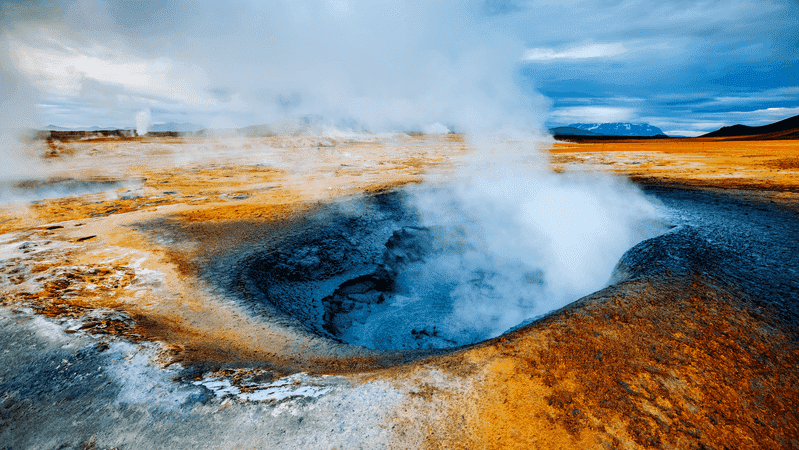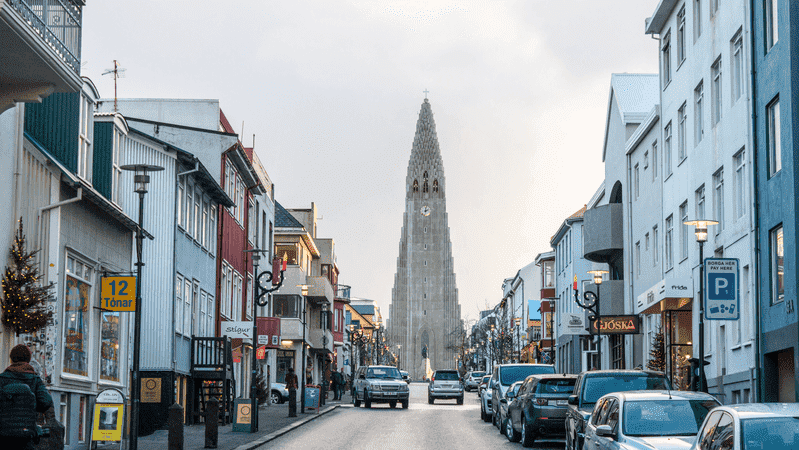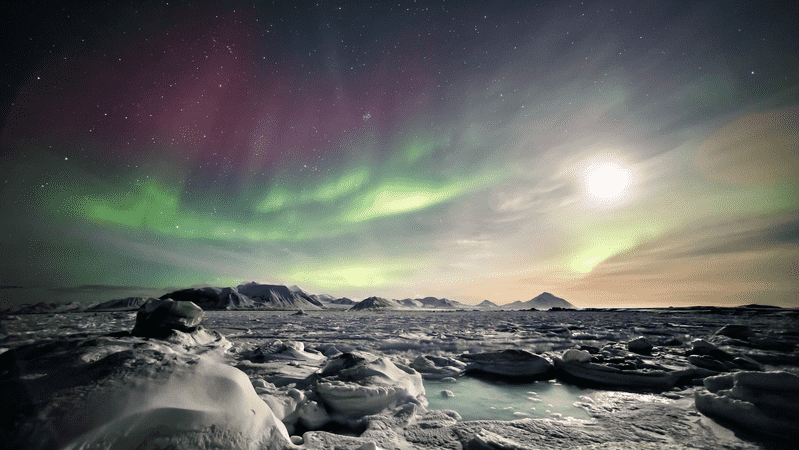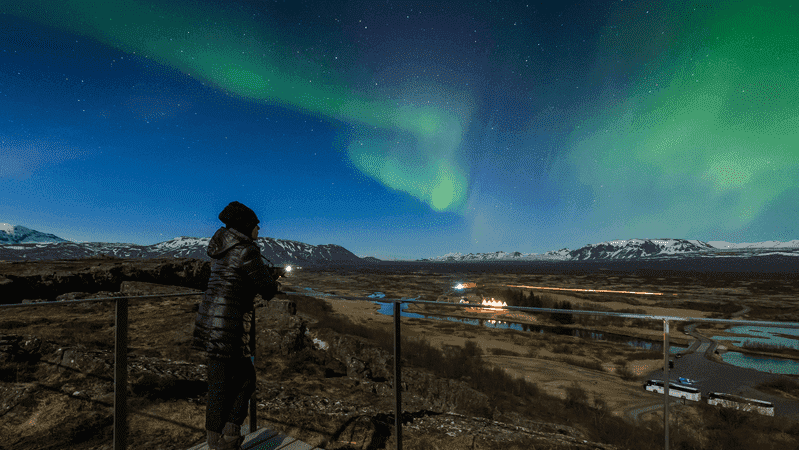The Northern Lights are nature’s most spectacular show; as unpredictable as they are beautiful.
This year, travellers will have the unique opportunity to tour Iceland with expert astronomer Dr John Mason in search of the South Coast’s view of the aurora borealis. With more than 30 years of experience leading overseas expeditions to record and observe natural phenomena, you couldn’t ask for a better travel companion on a Northern Lights hunting adventure. Not only will you receive insight and tips on the best way to observe the lights, but a series of lectures will explain the science behind their elusive displays.
When your head isn’t turned to the skies, you’ll be dazzled by Iceland’s wonders, from Reykjavik’s eclectic charms to the volcanic formations of Lake Myvatn. But what can you expect on an adventure built around the unexpected? We spoke to Dr John Mason to find out what you should know before you go, and what you may discover in the land of fire and ice.
Do you remember what sparked your interest in the Northern Lights?
My love affair with the aurora borealis or Northern Lights began on the night of 5th August 1972 when there was a rare auroral display visible from southern England. I witnessed that display from my home, which was fortunately located in a nice, dark place. I have been fascinated by the Northern Lights ever since. I started travelling up into the Arctic to see them in 1988 and I have been doing so ever since, journeying to Alaska, the Yukon, Iceland and the far north of Norway, Sweden and Finland. Seeing them is addictive, almost like a drug, because no matter how wonderful an aurora one has seen, one always hopes for something better the next time!
Why have you chosen the locations on this tour, and why this time of year?

Iceland lies close to the northern auroral oval – the ring around the Arctic Circle where the Northern Lights are most likely to be seen. It is also a country with the most stunningly beautiful scenery with glorious waterfalls, glaciers, hot springs, mountains and volcanoes. The lights of the capital Reykjavik can be quite bright in and around the city itself, so to get the best views of the Northern Lights I like to head out of town up to the northern part of the country. To the north-east, in the Lake Myvatn area, there are not only dramatic volcanic landscapes, but if the weather provides a clear sky, the Northern Lights are almost always visible. In the late spring and summer months, the sky here is too light to see them, but in the autumn and winter months, the nights are long providing plenty of opportunities to obtain some good views.
Can you tell us a bit about the lectures that will take place?
In the lectures I try to give people the background knowledge they will need to appreciate the Arctic night sky, to understand how the aurora occurs, its many different forms and how to have the very best experience when outside observing and trying to obtain nice images of the auroral displays. I explain how the Northern Lights are caused when electrically-charged particles – originating from the Sun’s outer atmosphere – are funnelled down into Earth’s atmosphere in a region around the north magnetic pole, known as the auroral oval. As these particles collide with atoms and molecules of oxygen and nitrogen high in the atmosphere, they excite them to produce the light that we see as the aurora. I also describe how the aurora appears in many forms from scattered patches of diffuse light to arcs, bands, streamers, rippling curtains or drapes of light and even searchlight-like rays that light up the sky with an eerie glow. Sometimes there is little or no movement, but at other times the aurora flickers and dances across the sky in a quite mesmerising way.
What would you consider the highlights of this adventure?

Iceland is always a beguiling country to visit. The capital Reykjavik is one of cleanest, greenest, and safest cities in the world and there are so many fascinating places to see. My favourites are Hallgrímskirkja Church, Harpa Concert Hall, the Parliament Building, the historic Höfði House, the panoramic views from the Perlan (or ‘the Pearl’) and the Sun Voyager sculpture, to name just a few. The north of Iceland is a mesmerising land of waterfalls and incredible rugged scenery that has been sculpted by glaciers and volcanic eruptions over the past few million years. The Lake Myvatn region is one of my favourite parts and it is from here that one hopes to catch one of nature’s grandest light shows – the Northern Lights.
Will travellers need to bring any equipment or have any astronomy experience to get the most out of this trip?
Obviously, it is important to bring appropriate clothing and sensible footwear for the trip, particularly as one may be out for long periods at night hoping to catch the Northern Lights. Late October/early November is a transition period between autumn and winter and there can be a great variety in the weather conditions, with sunshine, rain showers and snow flurries all in one day. So one must be prepared for every eventuality. At night the temperatures can drop to near zero and in the daytime it will be around 4-7°C. Binoculars are always handy both for daytime and night-time use and if you want to take good images with your camera a tripod is certainly helpful. No previous experience or knowledge of astronomy is necessary to get the most out of the trip.
What are the chances of seeing the Northern Lights in this part of the world?

The longer you stay in or very near the Arctic Circle during the viewing season – which extends from the end of September until early April – then the better one’s chances of seeing the Northern Lights. Statistics collected in 2015 showed that if a guest stays just one night in the Arctic they have only a 14% chance of seeing the Northern Lights, whereas if they stay for five nights their chances increase to about 90%. But you must be ready to get up whenever the sky is clear – even if that is at 3 o’clock in the morning!
What is the one thing people should know before hunting for the Northern Lights?
When embarking on an adventure to view the Northern Lights one must be aware that the two qualities one needs in abundance are patience and perseverance in equal measure! Nature rarely runs according to our timetable. The Northern Lights are a natural phenomenon. By their very nature they are unpredictable – as is the Arctic weather! There may be long periods of overcast skies, or little or no auroral activity, then sudden and often quite brief bursts in activity when the aurora may vary rapidly in form, brightness and colour. When this happens they are worth every moment of the long wait, but one must remain alert and be ready.
And, finally, the most important piece of advice I can give you is this:
The Northern Lights are one of Nature’s greatest spectacles. Enjoy them with your eyes and take pleasure in experiencing them at first hand, BEFORE using your camera. The mental images and experiences you take away with you are far more important than any pictures captured by your camera.
Want to search for the Northern Lights with Dr John Mason? Find out more about this tour.

